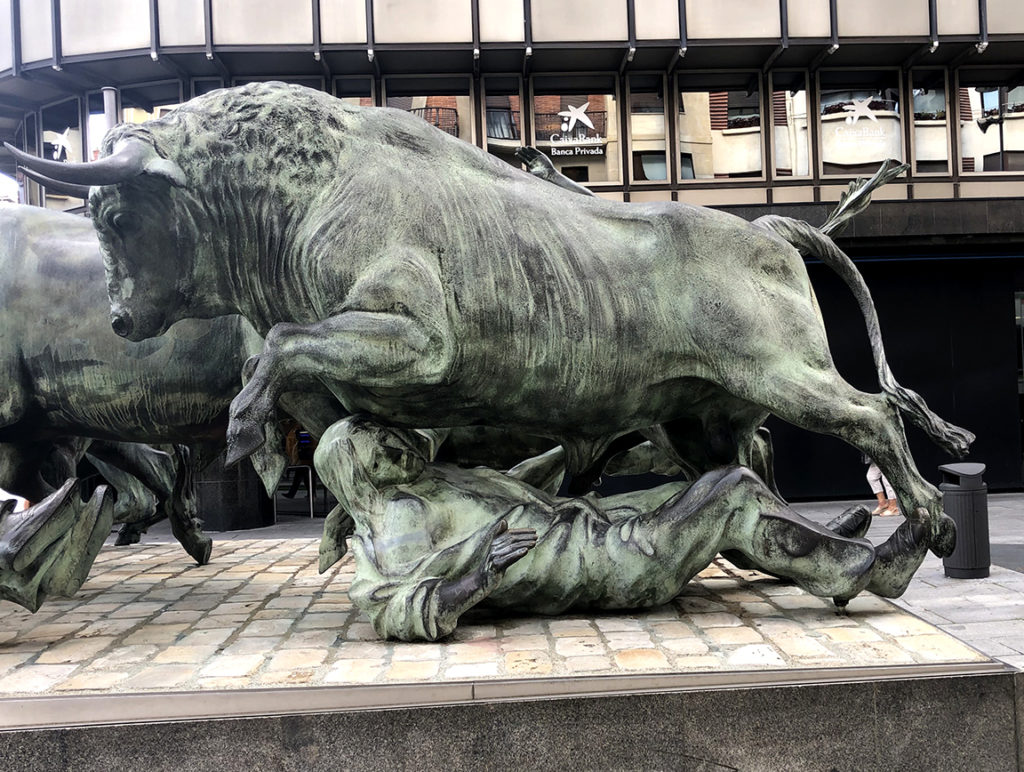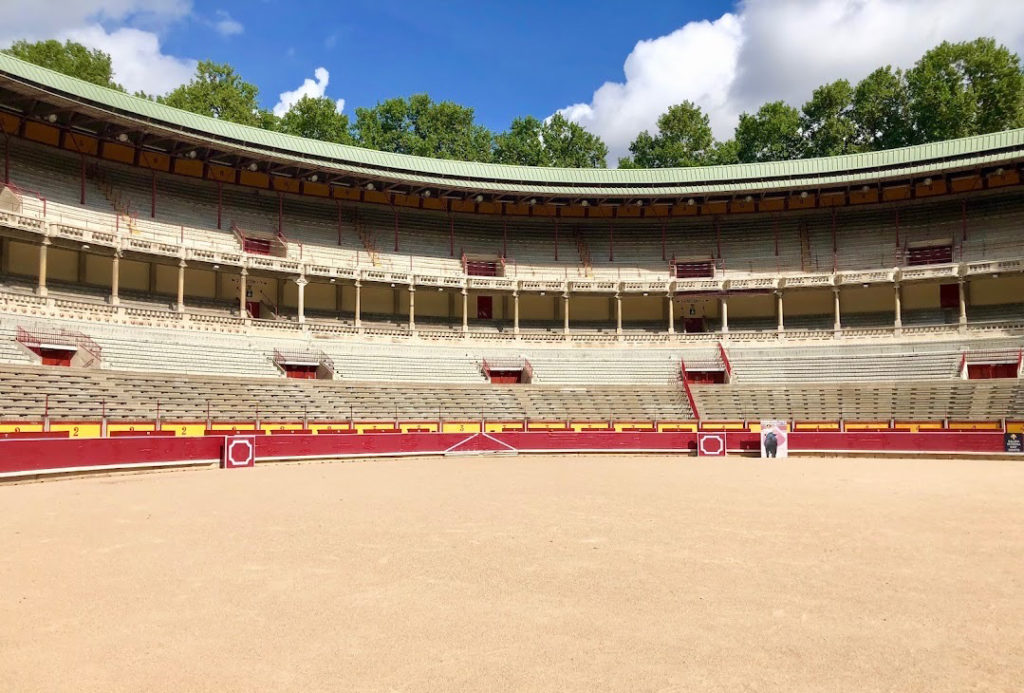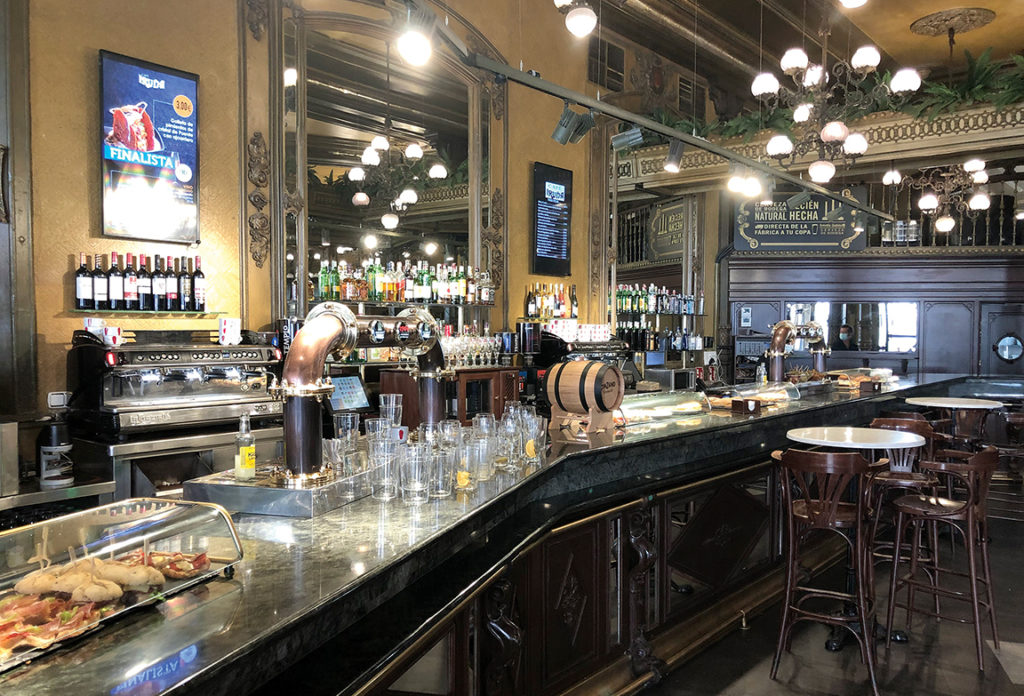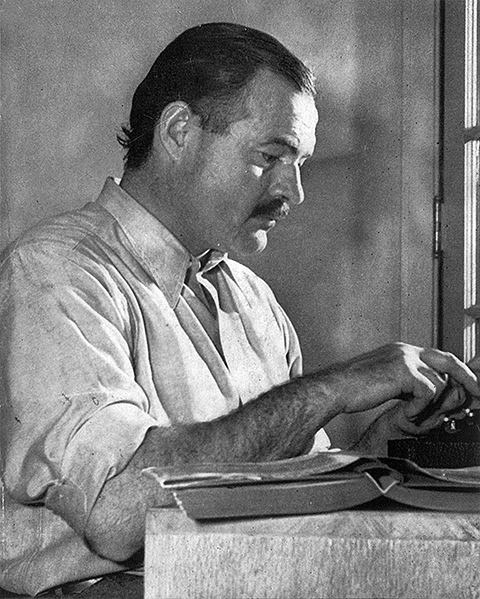
By Watt Miller
Editor’s note: Watt Miller was born and raised in Johnson City. He got his start in journalism as a reporter for the then Johnson City Press Chronicle. He retired after 40 years as a print and broadcast journalist. He’s the author of the novel Dreams of Cherry Blossoms and is working on a sequel about the U.S. secret war in Laos during the 1960s. He lives with his wife in Decatur, Georgia. This is part one of a two-part series on Watt’s travels to some of Hemingway’s favorite Spanish locales.
You don’t have to go far to discover the giant footprints of Ernest Hemingway in Spain, “the country,” he said, “I loved more than any other except my own.”
On a recent trip to Spain, I followed Hemingway to several of his favorite cities. My first stop was the northern Basque city of Pamplona, known throughout the world for the Running of the Bulls.
Hemingway put Pamplona on the international stage with the publication of his first novel, The Sun Also Rises, in 1926. It tells the story of the star-crossed love affair between the two main characters and the trip they took with friends from Paris to Pamplona for the seven-day, 24-hour party officially called the Festival of San Fermin.
This is how he described the festival in The Sun Also Rises:
“It kept up day and night for seven days. The dancing kept up, the drinking kept up, the noise went on. The things that happened could only have happened during a fiesta. Everything became quite unreal finally and it seemed nothing could have any consequences.”
As with many of Hemingway’s novels, The Sun Also Rises was drawn from the author’s life, in this case his early years living in Paris and first trip to Pamplona in 1923. The main event of the annual festival in July is the daily running of the bulls in the morning and an afternoon bullfight in the city’s 20,000-seat stadium, the second largest in Spain.

I arrived in Pamplona after a relaxing three-hour train ride from Barcelona. The early September weather was ideal: warm but not too hot, cloudless sky and cool evenings.
My lodging was perfectly located on the narrow Calle Estafeta, one of the three streets of the Running of the Bulls. The others are Santo Domingo, Ayuntamientoand Mercaderes. If you were running in a straight line the distance would be about the length of nine football fields.
The entire route twists and turns through the Old Town. It’s lined with restaurants, bars and small shops. Tables and chairs spill into the streets where people gather for drinks, usually wine or beer, and appetizers similar to tapas called pintxos.
Walk in one direction along the Estafeta and you’ll come to the Plaza de Torosde Pamplona, the bullring. Go in the other direction and you’ll find the Corralillosdel Gas, the pens where the bulls are kept during the festival. The outside walls of the pens are decorated with murals depicting scenes of the running of the bulls.
One beautiful morning, I walked along the Estafeta until I came to the bullring. The massive structure is shaded by broad leaf trees. At the front entrance a young woman was selling tickets for a self-guided tour. Inside is a small museum with enlarged photos of bullfights, famous matadors and posters advertising bullfights. You can also watch a short film on the history of the bullring and, as I did, walk onto the sand-covered field.
Later I strolled in the other direction along the Estafeta to see the bull pens. I stopped at one of the numerous eateries and had a lunch of pintxos, small servings of fish, meat, veggies or fruit usually served on fresh Basque bread and a glass of local beer.
As I continued my walk I made a slight detour to see the life-size bronze sculpture Monumento al Encierro (Bull Run Monument), the work of the sculptor Rafael Hueta. The realistic rendering of the Running of the Bulls was first unveiled in 1997. It’s only a few steps from the Plaza del Castillo and can’t be missed.
The snake-like road to the bull pens is much longer than it looks on the map and one long stretch descends a quarter of a mile before leveling off and crossing the Arga River. The name Corralillos del Gas pens comes from a gas factory that operated in area in the 1800s.
In The Sun also Rises Hemingway describes the release of the bulls into the pens. “Someone rapped on the cage with an iron bar. Inside something seemed to explode.
The bull, striking into the wood from side to side with his horns, made a great noise. Then I saw a dark muzzle and the shadow of horns … the bull charged and came out into the corral, skidding with his forefeet in the straw as he stopped, his head up, the great hump of muscle on his neck swollen tight, his body muscles quivering as he looked up at the crowd…”
On the first day of the running of the bulls Hemingway’s account puts the reader right in the middle of the frenzied crowd of people scampering for their lives.
“There were so many people running ahead of the bulls that the mass thickened and slowed up going through the gate into the ring, and as the bulls passed, galloping together, heavy, muddy-sided, horns swinging, one shot ahead, caught a man in the running crowd in the back and lifted him in the air. Both the man’s arms were at his sides, his head went back as the horn went in, and the bull lifted him and then dropped him.”
At least 15 people have been killed running with the bulls since officials began keeping records in 1910. Every year scores of people are injured.
Walking back toward my apartment, I stopped in the Plaza del Ayuntamiento to view the ornate City Hall. The current building was constructed in the 1700s but its origins are to be found in the 15th century. This is where the Festival of San Fermin officially begins with the firing of rockets from the top of City Hall.
It’s no exaggeration to say that Hemingway had a passion for “corrida de toros,” the bullfight. In fact, bullfighting is what drew him to Pamplona in the first place. He viewed himself an aficionado.
But he didn’t think of bullfighting as a sport. This is how he described it in Death in the Afternoon, his nonfiction book on matadors and bullfighting in Spain:“The bullfight is not a sport in the Anglo-Saxon sense of the word, that is it is not an equal contest … Rather it is a tragedy: the death of the bull, which is played … by the bull and the man involved and in which there is danger for the man but certain death for the animal.”
On another day I stopped at one of Hemingway’s favorite eateries and watering holes, the Café Iruna. Founded in 1888, it’s located in the Plaza del Castillo, considered by local residents as the heart of the city.

Here’s one mention from The Sun Also Rises: “We had coffee at the Iruna, sitting in comfortable wicker chairs looking out from the cool of the arcade at the big square.”
The grandiose ground floor dining room is noted for its marble tabletops and wooden chairs, floor to ceiling columns and black and white checkerboard marble floor. At the center of the long wood marble-topped bar is a large ornate mirror. At one end is a statue of Hemingway.
Outside are rows of tables and chairs where I had lunch, including a couple of pintxos, a mixed green salad with avocado, selection of cheese and house baked bread and glass of white wine. I polished that off with a slice of rich dark chocolate cake and an expresso.
Almost next door to the Café Iruna is the Grand Hotel La Perla, where Hemingway sometimes stayed when visiting Pamplona. But his favorite, also located in the plaza, was the Hotel Quintana, called the Hotel Montoya in The Sun Also Rises. It closed decades ago.
The novel ends with the two main characters in Madrid. And that was my next destination as I boarded a train to continue following Hemingway’s footsteps.
The story continues here.





